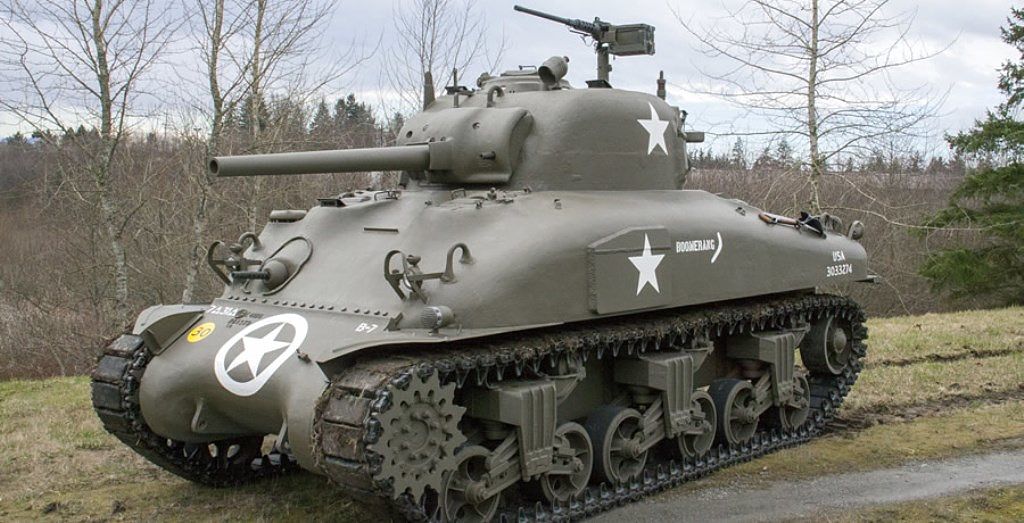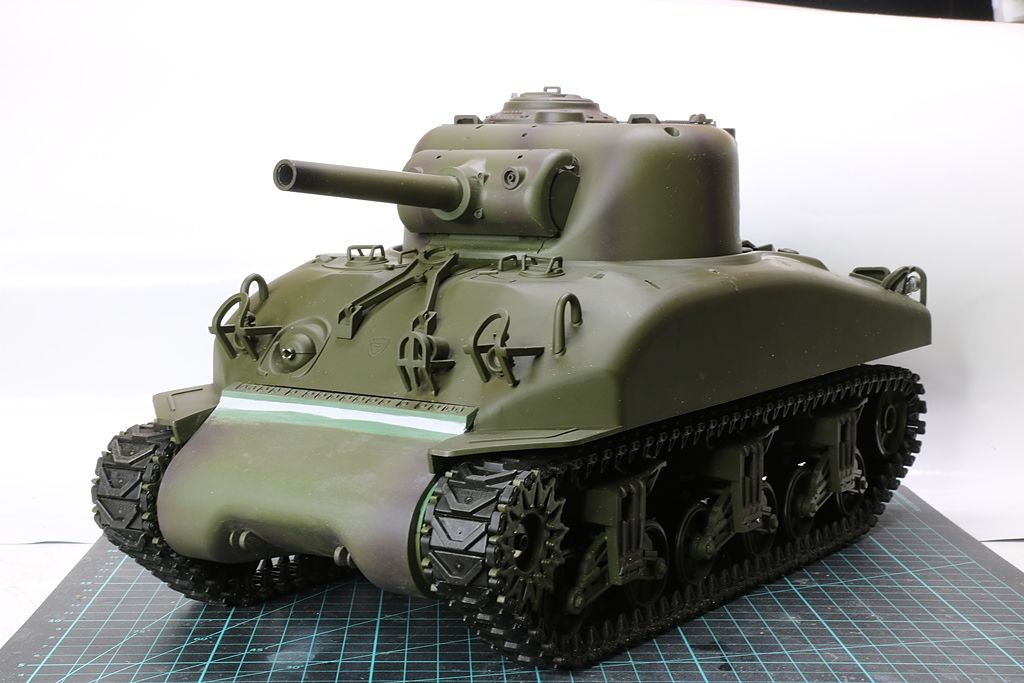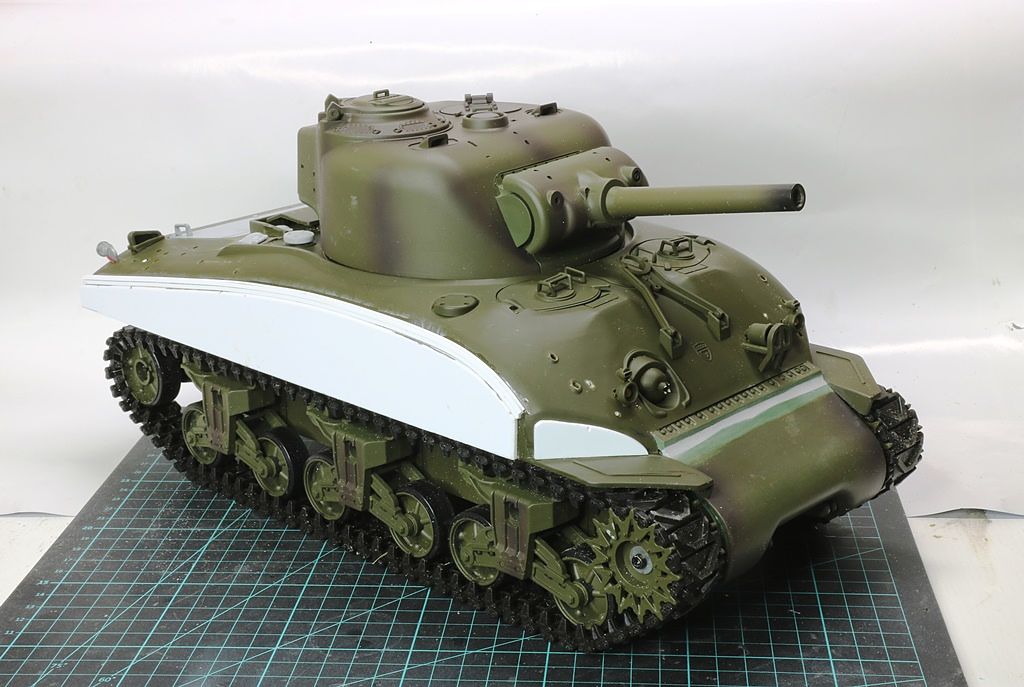The tank belonging to the Flying Heritage and Combat Armor Museum is painted up as ‘Boomerang’ 3033274, which it is not. The Museum’s M4A1 was built at Pressed Steel Car Company in Chicago. It was accepted into the U.S. Army in 1943 and most likely stayed in the United States to train new tank crews headed overseas. Early in 1945, the tank was sent to a remanufacturing facility and then released to the Dutch army as part of the Major Defense Acquisition Program.
When the tank was no longer useful, it was acquired by a collector and restorer. From 2011 to 2012 the vintage Sherman was restored to its WWII form at C&C Military Services in the UK. Part of the restoration included removal of bogey and sprocket spacers to allow use of wider tracks. These images are screenshots from the Museum's presentation clip released last week.
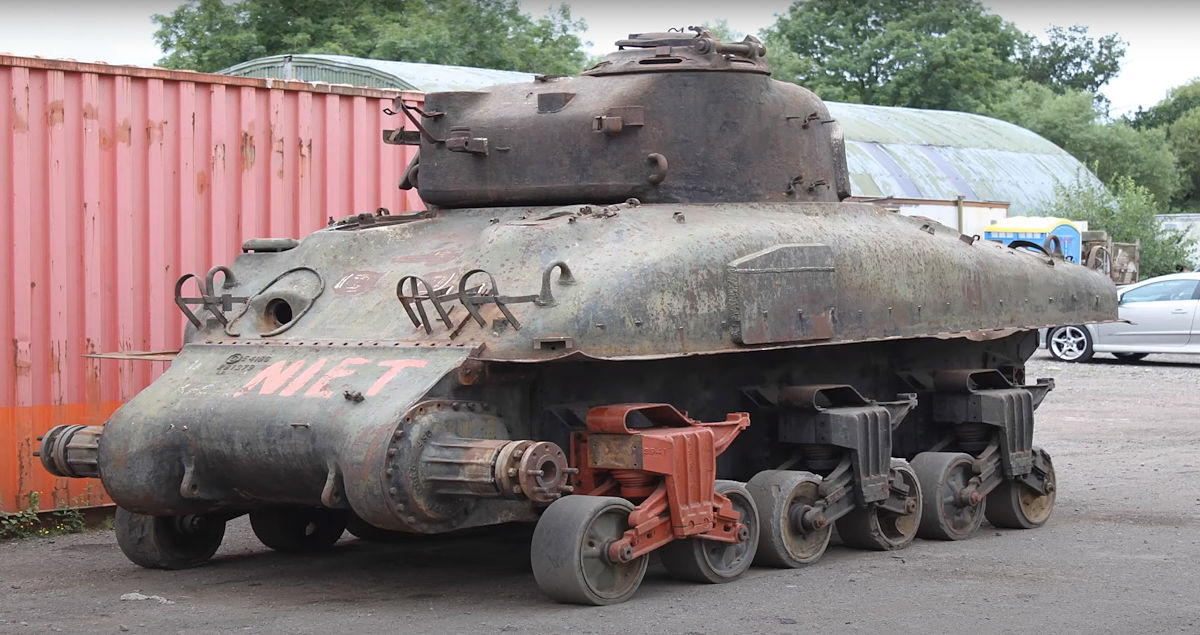
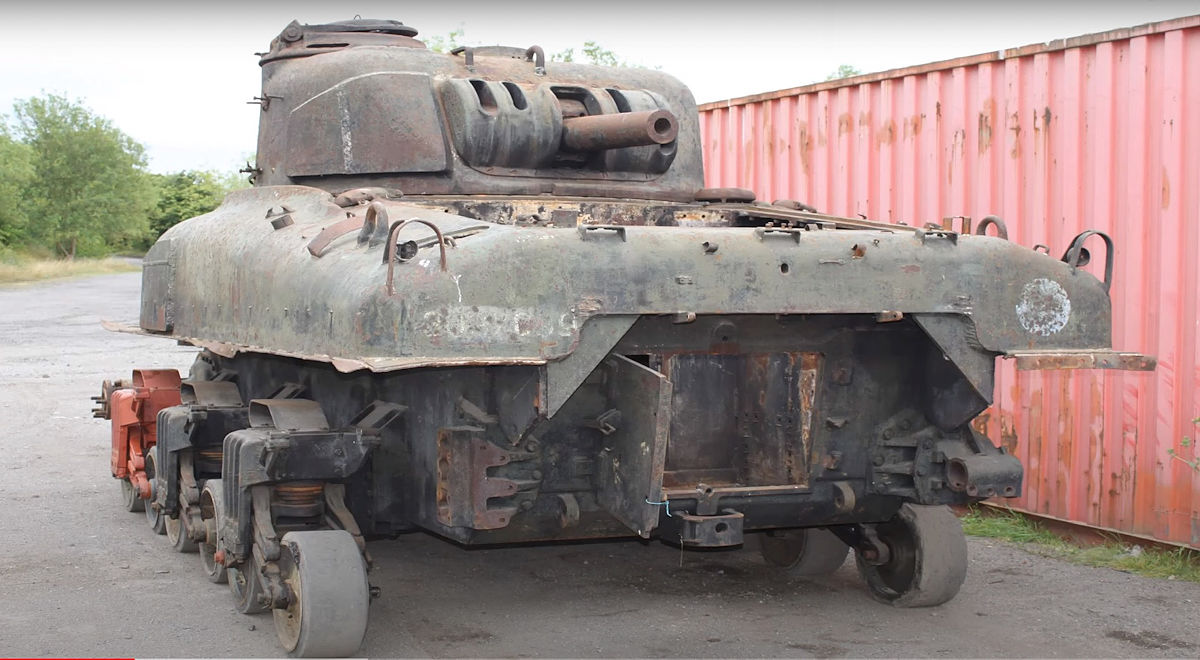
Today it wears the colours of ‘Boomerang’ from B Company, 31st Tank Battalion in the 7th Armored Division. There are no known photos of Boomerang, but here is a sister tank from B Company, ‘Battling Bitch’.
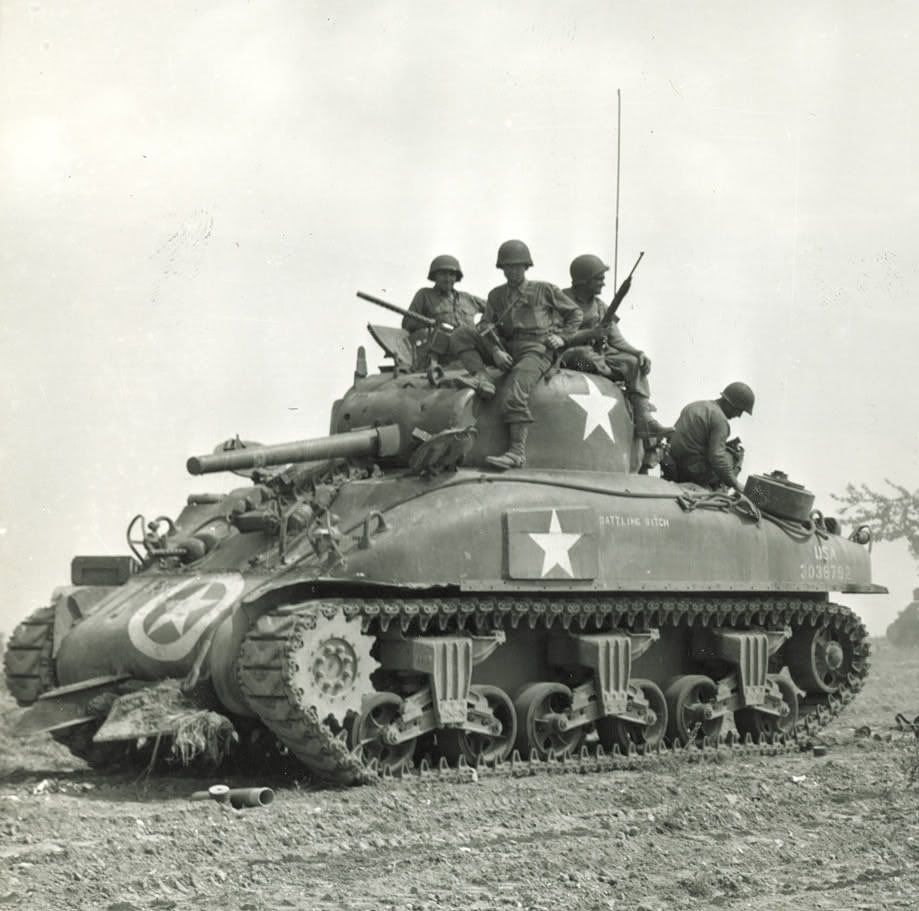
The 31st Tank Battalion consisted of 3 companies (A, B and C) and was part of the 7th Armored Division, that trained in California and arrived in England in June 1944, and landed on Omaha and Utah beaches in mid-August. They initially bivouacked near Lessay, before heading south to Laval, then east to Chartres two days later. Initial contact was made with a small force of infantry and anti-tank guns on the outlying villages. A two-pronged night attack was taken on the town, which then involved three days of fighting against 3000 German troops in urban terrain that made life difficult for the tankers.
After the battle they moved north to Dreux where they encountered stiff enemy resistance and moved about in response, before heading off to Melun to take on the enemy five days later. After mopping up they were sent out northwest towards Reims being held up by anti-tank positions, mines and blown bridges. Eventually crossing by pontoon bridges, they went on to liberated Chateau-Thierry and then Verdun on 31 August.
The 7th Armored halted briefly for refuelling and then on 6 September drove on toward the Moselle and made a crossing near Dornot. This crossing had to be withdrawn in the face of the heavy fortifications around Metz. On 25 September 1944, the 7th Armored Division began the march to the Netherlands where they were needed to protect the east flank of the corridor opened by Operation Market Garden.
On 30 September, the 7th Armored Division launched an attack from the north on the town of Overloon. On the defending side was the German Kampfgruppe Walther consisting of paratroopers from the 21. Regiment, a battalion sized unit from the 10. SS-Panzerdivision Frundsberg equipped with Panthers and STuG IVs, and a Luftwaffe 88 mm battalion. The hard core of the unit was the 107. Panzerbrigade. The Germans had sufficient time to be reinforced and to prepare defences, so the 7th took heavy losses and had to withdraw. The British 3rd Infantry and 11th Armoured Divisions took up the attack preceded by artillery and bomber attacks that pounded the villages around Overloon, and more fierce fighting ensued until the enemy was subdued. The allied units lost many tanks from 30 September to 8 October and so like much of Europe, wrecks were left behind on private lands. In 1947 local reports indicated there were the 26 tanks still left behind in the Overloon locale.
Comparison of reports from evacuated residents and the local Burgomaster compared with battlefield reports and serial numbers gives some indication of the whereabouts of the losses by the 31st. At Vortum north of Overloon, four tanks including three from B company were identified including 3033274 Boomerang. The divisional records indicate "Left St Antonis 1300 Arr at Boxmeer 1330 Distance traveled 2 Mi. 1st and 2d Platoon attacked Vortum 0630 lost 4 Tks and 1 Half Track" on 1st October.
Unfortunately, in the heat of battle, not all the dead could be recovered. Returning locals buried those they could find. In March 1947 the Burgomaster indicated that human remains could still be seen inside four of the tanks including Boomerang. Along with others that were buried, these were later recovered and buried at a cemetery for US servicemen at Margraten. As the other crew survived the destruction of Boomerang, the remains were attributed to Private Thurman Meeks who had been declared MIA.
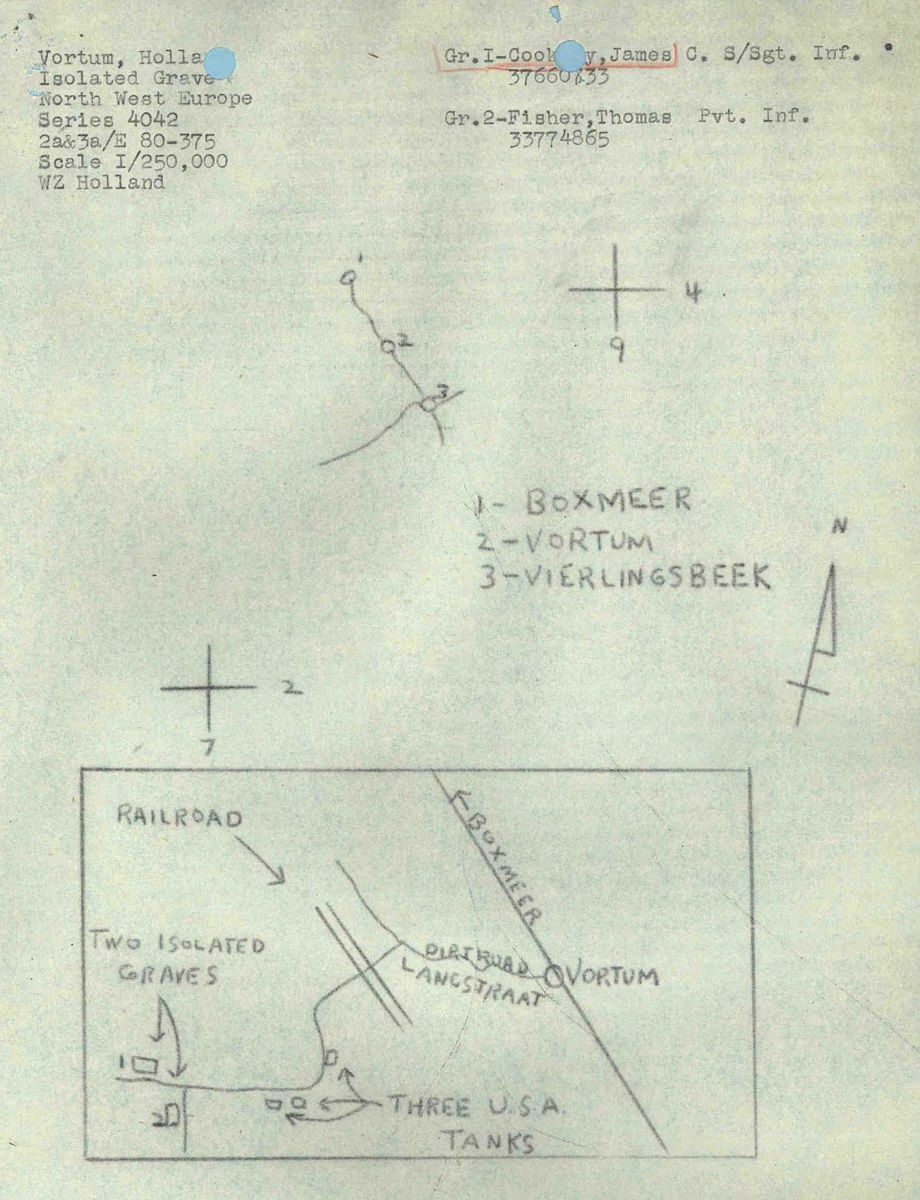
When it came time to choose markings for the Flying Heritage and Combat Armor Museum’s new acquisition, late Microsoft co-founder Paul Allen chose to do a tribute to Boomerang.
